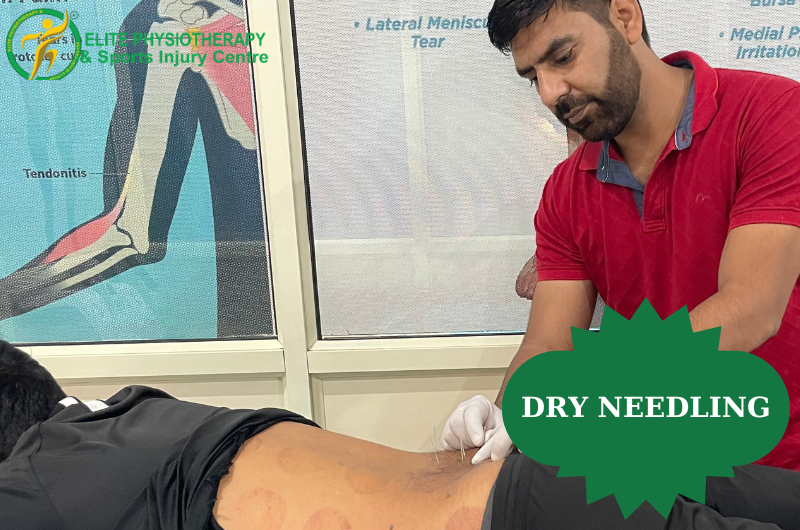
Dry Needling
Dry needling is a physiotherapy technique used to treat musculoskeletal pain. It involves inserting thin, sterile needles into the skin and muscle at specific points known as trigger points. These are hyperirritable spots in skeletal muscle associated with palpable nodules in taut bands. The goal of dry needling is to relieve pain, reduce muscle tension, and improve mobility by eliciting a twitch response from the targeted muscle, which helps to release the knot and alleviate symptoms. Unlike acupuncture, which is based on traditional Chinese medicine, dry needling is grounded in Western medicine principles and focuses on treating specific areas of discomfort.
Questions
WHAT IS THE PRINCIPLE OF DRY NEEDLING?
Trigger points, which are tight bands or knots inside muscles that can produce pain and dysfunction both locally and in referred patterns, are the foundation of the dry needling technique. The purpose of dry needling is to release these trigger points in order to reduce discomfort and enhance function. A trigger point can produce a local twitch response, which is a transient contraction followed by relaxation of the muscle fibers, when a thin, sterile needle is put into it. This reaction aids in resetting the biochemical and neurological setting of the muscle, lowering inflammation, improving blood flow, and encouraging recovery.
WHAT ARE THE COMMON CONDITION TREATED BY DRY NEEDLING EXPLAIN HOW?
By focusing on trigger points in the muscles, dry needling is used to treat a range of musculoskeletal disorders. Among the conditions that are frequently addressed with dry needling are:
Myofascial Pain Syndrome: A persistent pain condition brought on by myofascial tissue sensitivity and tension. By releasing the taut muscular bands linked to trigger points, dry needling lessens pain and increases range of motion.
Tension headaches and migraines: often associated with trigger points and tense muscles in the upper back and neck. By easing the muscles and lowering the tension that fuels the migraines, dry needling can help relieve these headaches.
Chronic Pain Conditions: People with fibromyalgia, for example, have body-wide pain and discomfort. By breaking the pattern of pain and tense muscles, dry needling can be used to target certain painful locations and provide relief.
Sports injuries: These include sprains and strains of the muscles, for which dry needling can expedite healing by lowering tenseness in the affected area, improving blood flow, and encouraging healing.
Tendonitis: To relieve discomfort and inflammation, dry needling can be applied to the tendons that are afflicted by conditions like tennis elbow or golfer's elbow.
Sciatica: Pain that travels down the sciatic nerve pathway is called sciatica. Muscle tension that may be causing sciatic pain can be treated with dry needling on the piriformis and lower back.
Muscle spasms: Dry needling can help by causing the spasmodic muscle to twitch, which relaxes the muscle and lessens discomfort and dysfunction.
Dry needling works well in these situations because it can trigger a local twitch response, which returns the muscle's tone to a more normal state. This can greatly reduce pain and enhance function in impacted areas, in addition to having the ability to release endorphins and modify how pain signals are sent to the brain.
